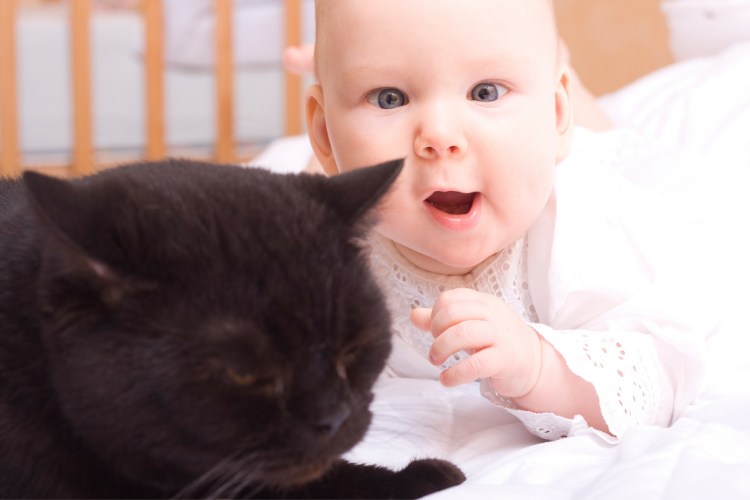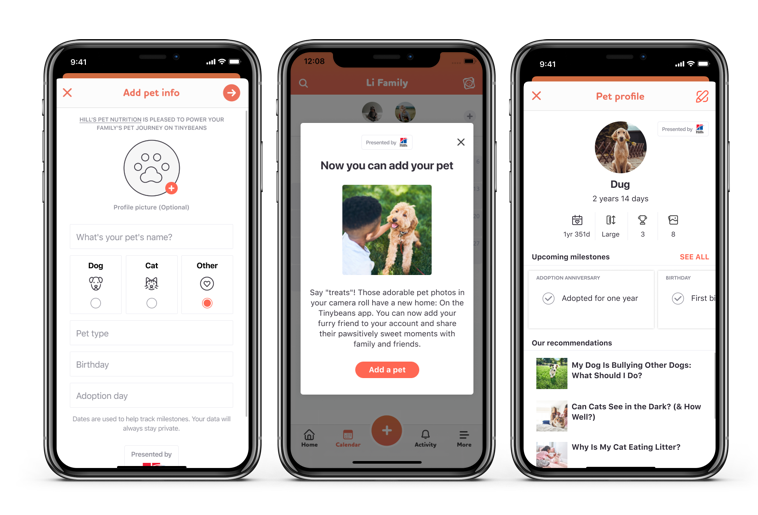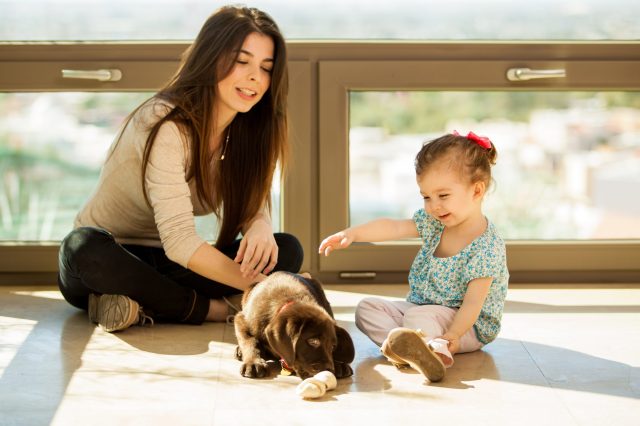Before you hear those first precious words, your baby is already hard at work communicating. From crying to cooing, smiling to waving, babies continue to amaze their sleep deprived parents with just how much they have to “say.” There are lots of ways to encourage your child’s continued growth during this exciting milestone. And it’s as simple as making enthusiastic animal noises when you’re pushing the stroller (no one will judge, we promise!).
(PS: Every child develops on their own timeline. If you have any concerns about your baby’s development, talk to your pediatrician.)

Point with purpose. This non-verbal gesture plays a big role in getting the verbal part going! Point at things you see when you’re on the go to build their vocabulary. When your child is excited and points, you’ll learn a lot from them too! Does your kiddo always point to the page with the kitten or light up when you see a neighbor’s dog on walk? Hint hint: Could be a sign you should add a furry family member to your crew. And if you do find yourself with Fido, your little one will be a great helper when they are able to speak more words and engage with their new BFF!
Considering adding a pet to your family? See how Hill’s science-backed nutrition can give your best friend their best life.
Start with newborn “chats”
You’re pretty familiar with crying as a way of communicating. (Hungry? Tired? Memo received!). The addition of sweet “cooing” to your kiddo’s vocal repertoire around months 1-2 is a nice change of pace. You’ll be compelled to coo right back for your first two-sided convos! Anywhere from six weeks to three months, your baby will show off those first smiles (and not just facial expressions from having gas). This is an exciting milestone because it feels like you two are really connecting.
All about those belly laughs
Thought it couldn’t get any sweeter? At around three or four months old, babies start to laugh. The sillier you are, the more giggles you get. Whether you’re blowing raspberries on their tummy or making an elated “woof!” sound when reading a story about pets, laughter goes a long way in boosting budding communication skills. Add different voices, movements, and funny sound effects to books and songs. You may be a “Wheels on the Bus” soloist for quite awhile, but eventually you’ll be part of the cutest duet. Pro tip: throwing in a “pop” sound to peek-a-boo will really blow their mind.
The more you talk, the more they learn! Simply narrating what you’re doing (“I’m changing your diaper now!”) or referring to objects and saying the name (“The cat is on the couch”) helps babies gain an understanding of their world. You’ll feel like you’re repeating yourself a lot, but that’s a good thing when it comes to word recognition. You can do this from day 1!
Read, read, read. It’s never too early to read to your baby. Aside from helping spur language development, it’s wonderful quality time and can easily be incorporated into your daily routine. Start with simple books that have colorful drawings or photos. Say the name of what you’re looking at (“green apples!” or “striped cat”). Board books are great because they’re sturdy, can’t be ripped, and hold up to drool and curious baby nibbles! Touch and feel books are also exciting for little hands to explore.
Say it with signs
Baby sign language is an effective way to help your baby express what they want well before they can say the words. At around six months, start teaching simple signs for common objects, activities, or people. “More” and “milk” are some good go-tos to get started. It may take anywhere from a few weeks to a few months for your kiddo to catch on, but the more you demonstrate, the better. Signing can help ease frustration when communicating (for both of you!).
Babble on!
8-10 month-olds seem to have a lot to say… even if you don’t have a clue what that is exactly. You might catch some “ma-ma” and “da-da” consonant/vowel sounds, although they’re probably not saying them intentionally yet. Heart melting first words will delight you anywhere from 12-18 months.
Practice those royal waves
Babies love to mimic… especially waving! Somewhere around 9 months, they may start saying hi and bye using this adorable gesture. Heads up: it’s a real crowd-pleaser on walks in the stroller. As your baby gets older, you’ll notice their imitation game gets stronger. They’ll love to copy you clapping and making silly faces and gestures. Remember, this fun back and forth is their version of having a conversation!
Show excitement. Babies pick up on your cues. If you’re engaged and respond with interest (even if the fire truck isn’t that exciting to you) they’ll pick up on those positive (and talkative!) vibes!
  |











